
Ofra Haza was an Israeli singer, songwriter and actress, commonly known in the Western world as "the Madonna of the East", or "the Israeli Madonna". Her voice has been described as a "tender" mezzo-soprano. In 2023, Rolling Stone ranked Haza at number 186 on its list of the 200 Greatest Singers of All Time.
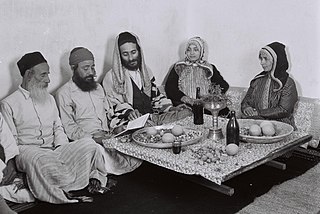
Yemenite Jews, also known as Yemeni Jews or Teimanim, are those Jews who live, or once lived, in Yemen, and their descendants maintaining their customs. Between June 1949 and September 1950, the overwhelming majority of the country's Jewish population immigrated to Israel in Operation Magic Carpet. After several waves of persecution, the vast majority of Yemenite Jews now live in Israel, while smaller communities live in the United States and elsewhere. As of 2022, Levi Marhabi is the last Jew in Yemen.

Maghrebi Jews or North African Jews are ethnic Jews who had traditionally lived in the Maghreb region of North Africa under Arab rule during the Middle Ages. Established Jewish communities had existed in North Africa long before the arrival of Sephardi Jews, expelled from Portugal and Spain. Due to proximity, the term 'Maghrebi Jews' sometimes refers to Egyptian Jews as well, even though there are important cultural differences between the history of Egyptian and Maghrebi Jews. These Jews originating from North Africa constitute the second largest Jewish diaspora group.
Mizrahi Jews, also known as Mizrahim (מִזְרָחִים) or Mizrachi (מִזְרָחִי) and alternatively referred to as Oriental Jews or Edot HaMizrach, are a grouping of Jewish communities comprising those who remained in the Land of Israel and those who existed in diaspora throughout and around the Middle East and North Africa (MENA) from biblical times into the modern era.
Jewish ethnic divisions refer to many distinctive communities within the world's Jewish population. Although considered a self-identifying ethnicity, there are distinct ethnic subdivisions among Jews, most of which are primarily the result of geographic branching from an originating Israelite population, mixing with local communities, and subsequent independent evolutions.
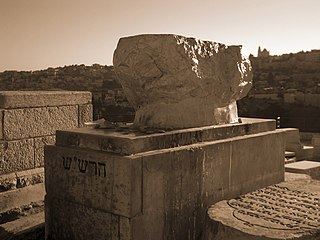
Sar Shalom Sharabi, also known as the Rashash, the Shemesh or Ribbi Shalom Mizraḥi deyedi`a Sharabi (1720–1777), was a Yemenite Rabbi, Halachist, Chazzan and Kabbalist. In later life, he became the Rosh Yeshiva of Bet El Yeshiva in the Old City of Jerusalem. His daughter married Rabbi Hayyim Abraham Gagin of Jerusalem, making him the great-great-grandfather of Shem Tob Gaguine, the "Keter Shem Tob." His son was Yitzhak Mizrahi Sharabi and his grandson was Chief Rabbi Chaim Abraham Gagin.

Mizrahi music refers to a music genre in Israel that combines elements from Europe, the Middle East and North Africa; and is mostly performed by Israelis of Mizrahi Jewish descent. It is usually sung in Modern Hebrew, or literary Hebrew.

Operation Magic Carpet is a widely known nickname for Operation On Wings of Eagles, an operation between June 1949 and September 1950 that brought 49,000 Yemenite Jews to the new state of Israel. During its course, the overwhelming majority of Yemenite Jews – some 47,000 from Yemen, 1,500 from Aden, as well as 500 from Djibouti and Eritrea and some 2,000 Jews from Saudi Arabia – were airlifted to Israel. British and American transport planes made some 380 flights from Aden.

Shalom Shabazi was the son of Yosef ben Avigad, of the family of Mashtā, also commonly known as Abba Sholem Shabazi or Saalem al-Shabazi. He was a Jewish rabbi and poet who lived in 17th century Yemen, often referred to as the arch-poet of Yemen.
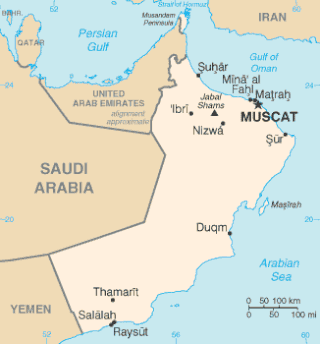
There was a Jewish presence in Oman for many centuries; however, the Jewish community of the country is no longer in existence.

Jewish history in the territory of modern Saudi Arabia begins in classical antiquity.
The history of the Jews in the United Arab Emirates describes the historical and modern presence of Jews over the millennia in the Middle East and the recorded meetings with Jewish communities in areas that are today in the geographic territories of the United Arab Emirates.

The history of the Jews in the Arabian Peninsula dates back to Biblical times. The Arabian Peninsula is defined as including the present-day countries of Bahrain, Kuwait, Oman, Qatar, Saudi Arabia, United Arab Emirates and Yemen politically and parts of Iraq and Jordan geographically.
Yemenis in the United Kingdom or Yemeni Britons include citizens and non-citizen immigrants in the United Kingdom of Yemeni ancestry, as well as their descendants. Yemenis have been present in the UK since at least the 1860s, with the first Yemenis arriving as sailors and dock workers in the port cities of Northern England and Wales, and despite a smaller population than other British Muslim groups, are likely the longest-established Muslim group in the United Kingdom, with many of these cities retaining a Yemeni population going back several generations.

Yemenis or Yemenites are the nationals of Yemen.
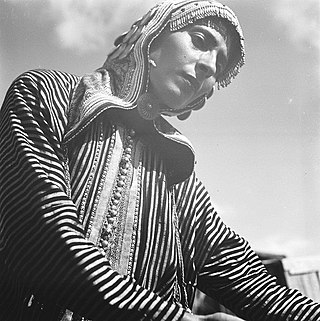
Yemenite Jews in Israel are immigrants and descendants of the immigrants of the Yemenite Jewish communities, who now reside within the state of Israel. They number around 400,000 in the wider definition. Between June 1949 and September 1950, the overwhelming majority of Yemen and Aden's Jewish population was transported to Israel in Operation Magic Carpet.
Israel was present at the 1983 Eurovision Song Contest, which was held in Munich, Germany. Their entry was "Hi" ("Alive"), written by Ehud Manor, composed by the previous year's Israeli representative Avi Toledano, and performed by Ofra Haza. The song was selected through Israel's traditional national final, the Kdam Eurovision.
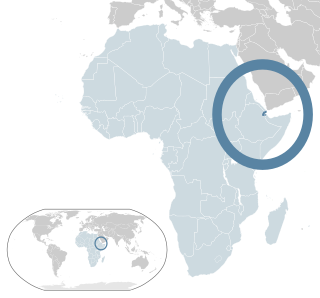
In the history of the Jews in Djibouti, the Jews of Djibouti are classified as part of the wider Yemenite Jewish community similar to those in Eritrea and Aden. Originally settling in Obock, and finally Djibouti City, in the wake of the British succession of the Gulf of Tadjoura to the French in 1884. The vast majority of the community made aliyah to Israel in 1949.

Mashriqi Jews refers to Jews from the Arab Mashriq region that covers parts of North Africa and Western Asia. This would include the following:
The history of Jews in Somalia refers to the historical presence of Jewish communities in the Horn of Africa country of Somalia.
















